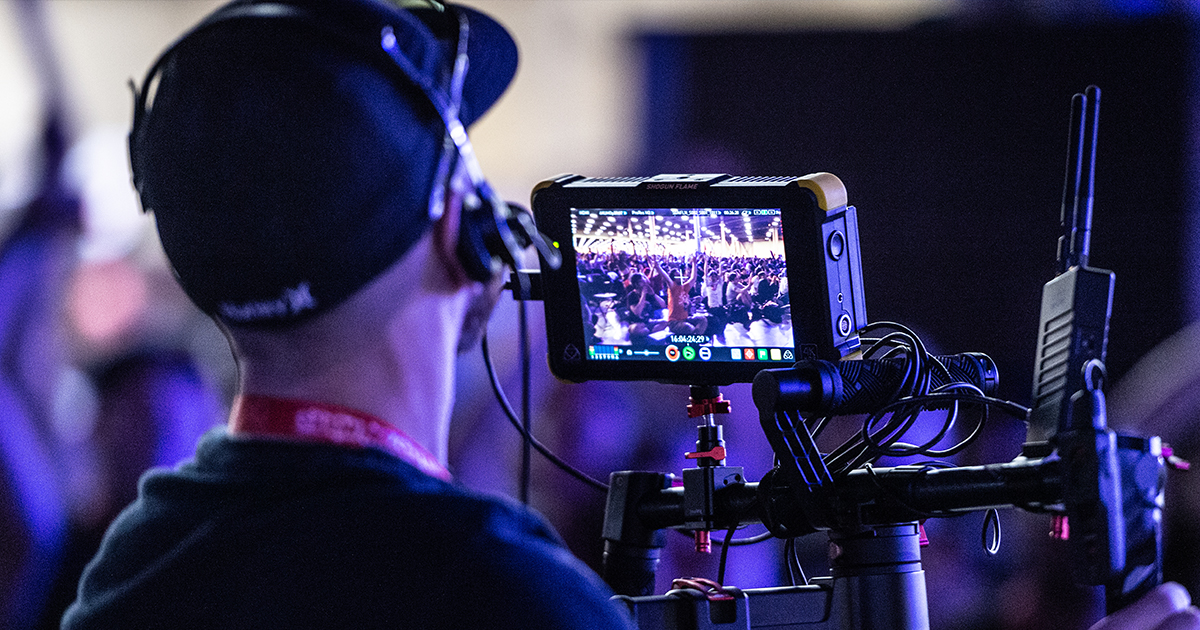Each generation of new cellular technology has represented a significant step up from the previous one. From the first generation technology in the late 1980s that provided basic voice services, to the 2G that introduced the world to text, picture and MMS services, the 3G that introduced the mobile internet and paved the way for the smartphone, and the 4G that sped everything up and advanced mobile video streaming — each new generation has raised the bar considerably and changed what we understand to be mobile communications.
Arguably though, the change that 5G represents is the most significant of all. Its combination of speed — from a peak speed perspective it is projected up to 10x faster than Australian standard 4G — and lower latency to enable real time experiences means that it can become a ubiquitous technology that can impact our lives at all levels, from device capabilities at home or a venue to the way content is delivered from events and broadcasters to audiences.
Devices are just the very start of a world composed of the Internet of Things, autonomous vehicles, Industry 4.0 production and more.
So, as we move into the new year, where are we with the 5G rollout? And, if we narrow our focus down to examine 5G’s role for media, what might the future bring?
The State of the Art
Despite all the disruptions that the Covid-19 pandemic caused, that 5G rollout has continued apace. If we look at our work in Australia as an example, our 5G network now reaches 44% of the Australian population and that will have expanded to 75% by June 2021.
We now have 5G sites in selected areas of more than 60 cities and regional towns around the country, and 40,000 new 5G devices are being connected to our network every week. While there are regional variations, if we look around the world this level of infrastructure support for the technology is becoming the increasing norm, and those numbers of connections are indicative of where we are heading in the short term. In the long term they are only going to increase.
“The use of 5G in the delayed Tokyo Olympics this summer will prove to be a major watershed for the technology.”
— Karen Clark, Telstra Broadcast Services
5G enables a range of key technologies that will have potentially big impacts on the media market. First off though it is worth pointing out that it is already starting to make inroads in sports broadcasting.
According to a recent poll, 76% of sports industry decision makers plan to use 5G to drive innovation, and close to the same amount (65%) would happily consider it for remote production. We see 5G contribution as being one of the first widescale uses of the technology in the media space, with untethered cameras able to roam over wide areas being particularly advantageous in the coverage of geographically diverse events such as golf or motor racing. They also hold out the promise of further reducing equipment load outs for all live event coverage and further facilitating the move towards remote production.
And, of course, it potentially changes the economics of distribution. Currently the default model of routing back to a production hub is to use fibre networks, microwave links or satellite. 29% of broadcasters have already expressed an interest in using 5G for video contribution back-up from the field and we expect that number to increase as the use cases grow. The combination of bandwidth and low latency expands new distribution capabilities.
Different spectrum will provide a range of options to cater for coverage in and out of buildings. For example we can use low band spectrum (700Mhz and 850Mhz) for use cases over long distances and ensuring building penetration from outside, while the mid band (3.6Ghz) provides the main bulk of the service.
Next to come is mmWave, large bandwidth, short-range, higher frequency spectrum that brings more speed and capacity into the network to cater for both the explosion in the number of connected devices and massive capacity uplifts where needed. This is the sort of technology needed to connect whole stadia of people at once, allowing them to communicate with each other, watch video highlights, and drive social media.
This is going to be a strong requirement. The average Bundesliga soccer match, as an example of a sporting event in a country with a robust 4G infrastructure, already attracts 43,000 spectators who consume an average amount of data between them of 500GB.
Our data shows that 5G device users will likely consume about 2x as much data as 4G. In other words, with consumer demand for more video offerings enabled by 5G, we are going to need the capacity that technology such as mmWave can deliver.
“According to a recent poll, 76% of sports industry decision makers plan to use 5G to drive innovation, and close to the same amount (65%) would happily consider it for remote production.”
— Karen Clark, Telstra Broadcast Services
5G network slicing is a key component of the technology’s deployment too. This allows network providers to create specific, time-limited networks for different customers with precisely the latency, bandwidth and quality attributes they require.
For example, one slice can be created that prioritizes high bandwidth and low latency to support broadcast contribution in a specific area, such as a sports stadium; another can be created that maximizes the available bandwidth for 8K streaming and so on.
Edge computing enables the processing to be conducted closer to the source of the data. This reduces latency to applications, improves customer experience and can increase the resiliency of those applications.
It is here where we really start to see the benefits to AR and VR applications as the increased processing power is available — and, of course, it is almost infinitely scalable — as the cloud is bought closer to the user to provide a seamless experience.
What is to Come?
Quite where this will take us is anyone’s guess. We suspect though that the first significant new developments of 5G in media will be felt where it is already in the first stages of deployment, in sports broadcasting.
We have already seen 5G-enabled cameras used at the US Open for Fox Sports and as part of the pre-match soccer coverage for BT Sport, and its use in the delayed Tokyo Olympics this summer will prove to be a major watershed for the technology.
It’s not too hard to imagine new forms of fan engagement being developed both in-stadium and at home that leverage the greater collection and analysis of data in real-time thanks to edge computing and present it to the individual through an array of 5G-connected wearables.
The technological evolution from 1G to 5G has been quite a fascinating journey that has already transformed the media industry. But change is accelerating all the time and it’s not too fanciful to say that we could see as much change in the next three years as we have seen in the last three decades.
From the way we make media to the way we distribute it and the way we consume it, the rollout of 5G is going to be fascinating to watch unfold.
By Karen Clark, Head of ANZ Sales, Telstra Broadcast Services





